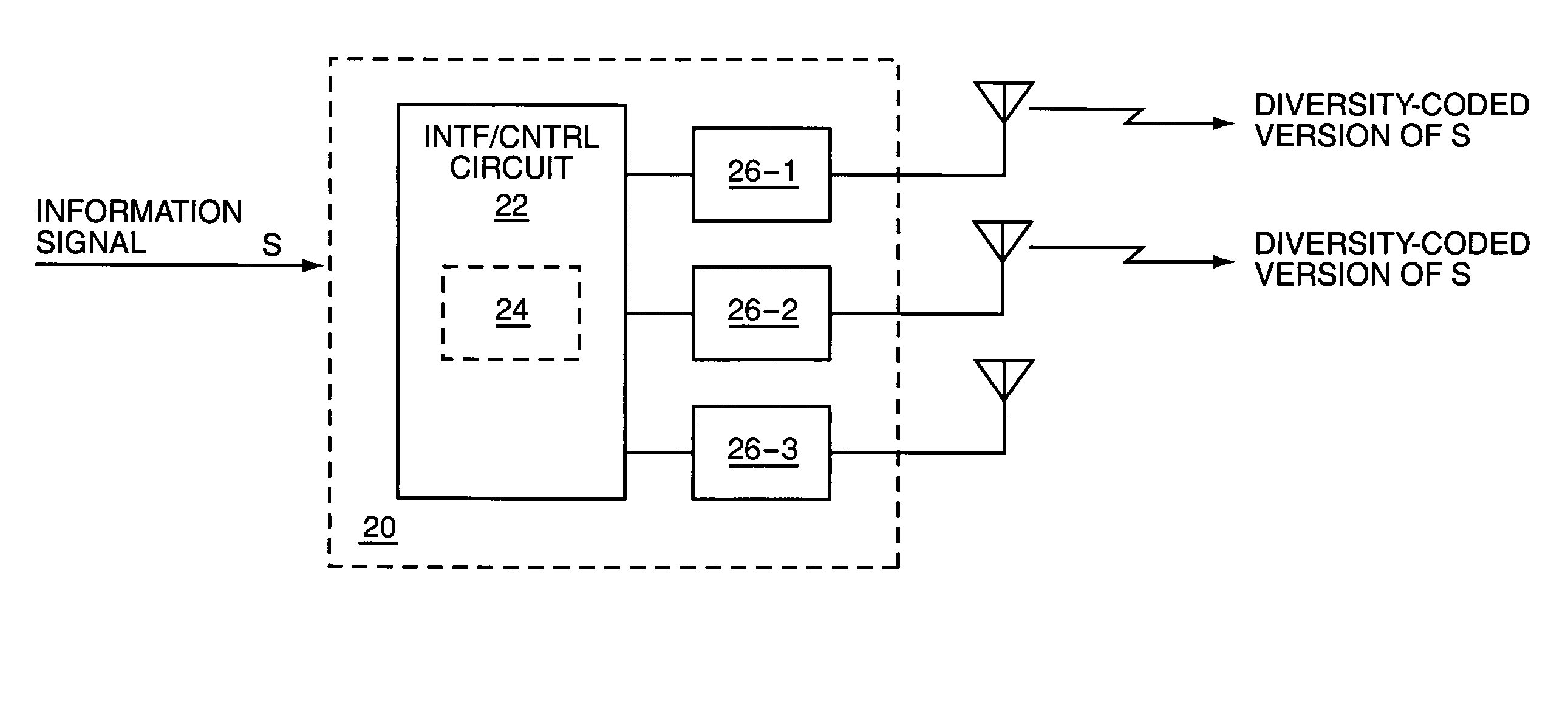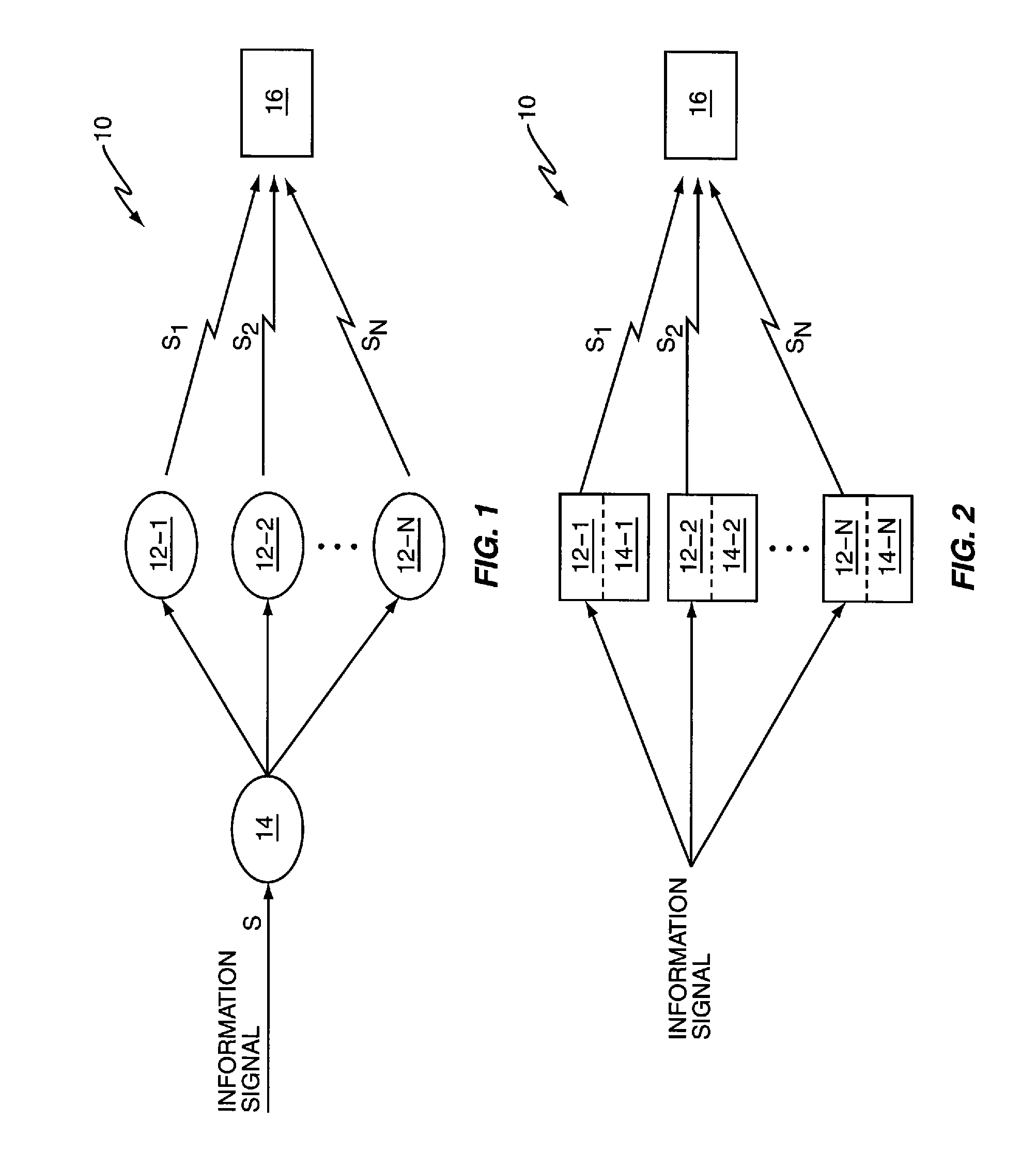Distributed transmit diversity in a wireless communication network
a wireless communication network and transmit diversity technology, applied in wireless communication, wireless commuication services, electromagnetic wave modulation, etc., can solve the problems of complex and dynamically changing channel fading conditions, one or more propagation paths between a particular transmitter and a particular receiver may be severely faded, and achieve significant challenges in maintaining acceptable communication performance in mobile communication environments, so as to improve diversity and balance code strengths.
- Summary
- Abstract
- Description
- Claims
- Application Information
AI Technical Summary
Benefits of technology
Problems solved by technology
Method used
Image
Examples
Embodiment Construction
[0021]FIG. 1 is a block diagram partially illustrating a wireless communication network 10 that is configured according to one embodiment of diversity-coded transmission as taught herein. Each of a number of spaced-apart transmitters 12 receives a different diversity-coded version of the same information signal, s, from one or more diversity-coding circuits 14, which may be implemented as a separate node within the network 10. By way of non-limiting example, the transmitters 12 may comprise sector transmitters located at one radio base station, or may comprise sector transmitters at different radio base stations, and the diversity-coding circuit(s) 14 may comprise processing circuits located in a base station controller that is associated with the radio base station(s).
[0022]Regardless, the information signal may comprise a dedicated channel signal targeted to a particular mobile station 16, or may be a Broadcast-Multicast Services (BCMCS) signal, or other type of broadcast signal, ...
PUM
 Login to View More
Login to View More Abstract
Description
Claims
Application Information
 Login to View More
Login to View More - R&D
- Intellectual Property
- Life Sciences
- Materials
- Tech Scout
- Unparalleled Data Quality
- Higher Quality Content
- 60% Fewer Hallucinations
Browse by: Latest US Patents, China's latest patents, Technical Efficacy Thesaurus, Application Domain, Technology Topic, Popular Technical Reports.
© 2025 PatSnap. All rights reserved.Legal|Privacy policy|Modern Slavery Act Transparency Statement|Sitemap|About US| Contact US: help@patsnap.com



